Pittsburgh Pirates: Top Five Offseason Priorities

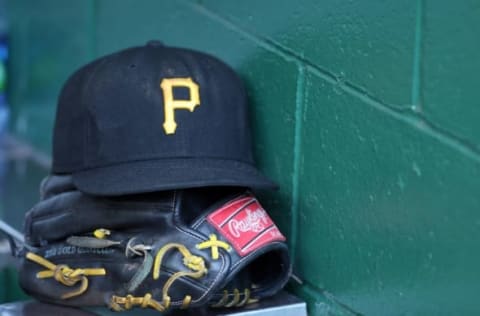
After three straight playoff seasons, the Pittsburgh Pirates missed the postseason and slipped back below .500 in 2016. What do they need to do to get back to being a contender?
The Pittsburgh Pirates were a disappointment in 2016 thanks in large part to injuries that limited the playing time for number one starter Gerrit Cole, third baseman Jung Ho Kang, and catcher Francisco Cervelli, along with a career-worst season from franchise centerpiece Andrew McCutchen. The middle infield combination of Josh Harrison and Jordy Mercer combined for 2.8 wins above replacement (fWAR, per Fangraphs), with both players being below average. Even worse, the pitching staff saw its ERA jump from 3.23 in 2015 (second-best in baseball) to 4.67 in 2016 (22nd in baseball).
The Pirates started making moves to assess the future of the club last season when they traded closer Mark Melancon and starting pitcher Francisco Liriano at the trade deadline. Liriano was expected to be their number two starter after three straight seasons with an ERA under 3.40, but he had a brutal season with the Pirates (5.46 ERA) before the trade. Melancon was as good as ever. He was traded away because he was headed for free agency at the end of this season and the Pirates were looking for young pitchers with years of control. They got a pair of young lefties, Felipe Rivero and Taylor Hearn, in exchange for the last two months of Melancon’s contract.
Finances are always a consideration in Pittsburgh. The New York Yankees have had a payroll over $200 million every year since 2008. The Pirates just had their first season in which they came very close to the $100 million mark ($99,945,500). The Pirates’ highest-paid player in 2016 was Andrew McCutchen, who made $13.2 million. The Yankees had eight players who made $13 million or more.
The plain truth is that the Pirates are on a different level financially than the big spenders. In recent years, they spent well below every other team in their division. That changed this year when the Cincinnati Reds and Milwaukee Brewers went into rebuilding mode. Consider the 2016 Opening Day payrolls of the teams in the NL Central (contract data courtesy Cot’s Baseball Contracts at Baseball Prospectus):
$171.6 million—Chicago Cubs
$145.6 million—St. Louis Cardinals
$99.9 million—Pittsburgh Pirates
$89.9 million—Cincinnati Reds
$63.9 million—Milwaukee Brewers
The Brewers and Reds them shed payroll prior to the 2016 season. The Brewers’ payroll was over $100 million in 2014 and 2015. The Reds’ payroll topped $100 million for three straight seasons from 2013 to 2015. This leaves the Pirates in a difficult position. Can they compete with the Cubs and Cardinals, who are able to outspend them by $50 million or more? Or do they rebuild and gear toward the future?
Here are the Pirates’ top five offseason priorities.
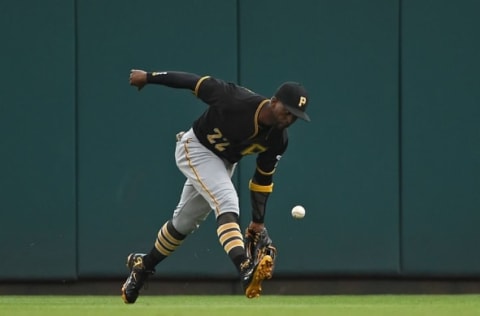
Trade Andrew McCutchen
The future of the Pittsburgh Pirates is highly dependent on what they do with Andrew McCutchen. He’s been the face of the franchise for the last half decade and was a consistent 6 WAR player for five straight years until his struggles in 2016. This year, he was a below-average player for the first time in his career (0.7 fWAR). He not only struggled at the plate, but was the worst rated center fielder defensively by Fangraphs. He just turned 30 years old earlier this week.
If Pirates’ fans are looking for a silver lining to his black cloud of a season, they can point to his August (.280/.391/.419, 124 wRC+) and September/October (.287/.373/.513, 136 wRC+). Over those final two months, McCutchen combined to hit .284/.381/.471, for a 131 wRC+. That’s not as good as his previous level of production, but it’s much closer to that level than his first half.
As long as last year was an aberration, McCutchen’s contract is team-friendly. He’s owed $14 million next year, with a team option at $14.5 million for 2018. Justin Upton has not been close to the player McCutchen has been the last five years and he signed a six-year, $132.75 million deal with the Tigers in January. McCutchen would get much more than two-years, $28.5 million on the open market, so he should have good trade value.
He’s also a fan favorite and a great guy who seemingly wants to stay in Pittsburgh. According to Rob Biertempfel of the Pittsburgh Tribune-Review, McCutchen knows his poor 2016 hurt his chances to sign an extension. McCutchen said, “Who’s going to want to sign me for the (rest of) my career when I’ve had the year that I’ve had? No one is going to think about that. You know what they’re going to think? ‘Trade hm. Get him out of here. He doesn’t deserve (an extension).’”
Pirates’ general manager Neil Huntington is considering all options. He said, “It’s fair to say we’ll continue to explore how we get this club back into a postseason hunt. We love this core (of players), and we think we can supplement it. At the same time, if there is a significant move that gives us a better chance to get back to the postseason in 2017 and ideally ’18 and beyond, that’s something we’ll be open to.” Trading McCutchen would be that significant move to help the team in 2015 and beyond.
Of course, Pirates’ fans would hate to lose a guy with this kind of talent:
There have already been rumors of trade destinations for McCutchen. One spot mentioned is New York, to the Yankees. The return for McCutchen mentioned in that article would be three pitching prospects—Justus Sheffield, Domingo Acevedo, and James Kaprielian. Another rumor had the Seattle Mariners showing interest in McCutchen, with the idea of moving him to left field and putting him in the lineup with sluggers Robinson Cano, Nelson Cruz, and steady third baseman Kyle Seager.
The Pirates hold the cards right now. They have not shown a willingness to sign players to long-term, high-priced contracts, but have been very good about signing young players to team-friendly deals, with McCutchen’s current contract being a good example. Prior to the 2012 season, McCutchen signed a six-year, $51.5 million contract, with two team options. That has worked out very well for Pittsburgh. They also have outfielders Starling Marte (6 years, $31M, with two team options) and Gregory Polanco (5 years, $35M, with two team options) signed to very good contracts.
It would look like a step back to Pittsburgh fans, but I’m in favor of trading McCutchen. It doesn’t have to happen this offseason, though. McCutchen could build up more value with a good start to 2017 and be a prime trade piece at next year’s trade deadline. Unless they are offered a bevy of good prospects this offseason, I would suggest the Pirates keep him to start the year, then look to move him at the deadline
In the meantime, young outfielder Austin Meadows could get more playing time in Triple-A. Meadows will be 22 years old next year and was the Pirates number two prospect prior to this season. He hit a very impressive .311/.365/.611 in 45 games in Double-A last year, but struggled a bit in Triple-A, where he hit .214/.297/.460 in 37 games. He’s the heir apparent to McCutchen.
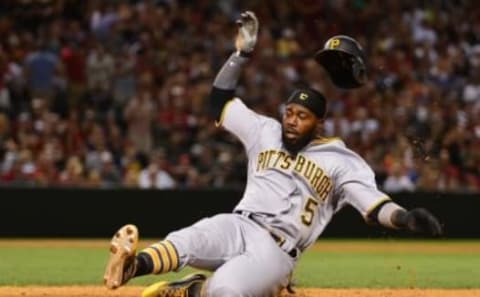
Mix It Up in the Infield
Looking at the roster breakdown with contract information for the team’s position players gives us an idea of where the Pirates stand.
- C Francisco Cervelli—$9M in 2017 ($22M in ‘18/’19)
- C Chris Stewart—$1.4M in 2017 (team option in ’18)
- 1B Josh Bell—Pre-arbitration
- 1B John Jaso—$4M in 2017
- 2B Josh Harrison—$7.75M in 2017 ($10.25 in ’18, plus two team options)
- SS Jordy Mercer—$4M in 2017 (projected in arbitration)
- 3B Jung Ho Kang—$2.75M in 2017 (3M in 2018)
- 3B David Freese—$6.25M in 2017 (4.25M in 2018, team option in ’19)
- LF Starling Marte—$5.33M in 2017, ($18.17M in ‘18/’19, plus two team options)
- CF Andrew McCutchen—$14M in 2017 ($14.5M team option in ’18)
- RF Gregory Polanco—$1.6M in 2017 ($30.4M for ’18 to ’21, two team options)
Lost to free agency:
- INF Sean Rodriguez
- OF Matt Joyce
Top position player prospects (ranked by MLB.com):
- #2 OF Austin Meadows, ETA 2017
- #3 1B Josh Bell, ETA 2016 (45 games in MLB in 2016)
- #4 SS Kevin Newman, ETA 2018
- #6 3B Ke’Bryan Hayes, ETA 2019
- #7 SS Cole Tucker, ETA 21019
- #8 3B Will Craig, ETA 21019
- #9 C Elias Diaz, ETA 2016 (1 game in MLB in 2016)
- #13 2B Alen Hanson, ETA 2016 (27 games in MLB in 2016)
The Pirates could conceivably stand pat with their offense. They have starters at each position, with roster flexibility to field a full bench. Catcher Francisco Cervelli hit for almost no power last year, but did have a .377 on-base percentage and is well-regarded defensively. The outfield is set with Marte, McCutchen, and Polanco. If McCutchen is traded, Josh Bell could play a bigger role in the outfield or prospect Austin Meadows could get a shot at regular playing time.
They could use more offense in the middle infield. Josh Harrison hit .250/.282/.367 as a utility infielder for the team in his first three years in the big leagues. Then he had a breakout season in 2014 when he hit .315/.347/.490 and made the NL All-Star team. He even finished ninth in the balloting for NL MVP (just ahead of Anthony Rizzo). The Pirates rewarded him with a four-year, $27.3 million contract, with two team options.
Unfortunately, Harrison hasn’t been the same hitter over the last two seasons (.285/.318/.389) as he was in 2014. He went from being a 5 WAR player to a 1.5 WAR player. His contract was back-loaded, so he’ll get paid $17.5 million over the next two years after receiving just $7.8 million over the previous two. This makes him harder to trade, should the Pirates explore that option.
If Harrison continues to hit the way he has the last two seasons, the Pirates could limit his playing time some by using Jung Ho Kang at shortstop, where he played 50 games in 2015, and give some time at second base to Jordy Mercer or Alen Hanson. This would allow the Pirates to give more time at third base to David Freese, who is a better hitter than Harrison, Mercer, and Hanson.
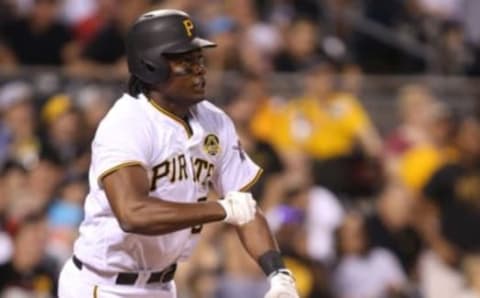
Let the Prospect Play
Josh Bell has been a Baseball America Top-100 prospect for the Pirates three times since 2012, including each of the last two seasons. He hit .317/.393/.446 across Double-A and Triple-A in 2015, then hit .295/.382/.468 in Triple-A last year before coming up to the major leagues. With the Pirates, he hit .273/.368/.406 in 45 games.
Bell had 19 starts in right field and 14 starts at first base for the Pirates last year. Much of his time in right field came when Starling Marte was dealing with an injury in September (Gregory Polanco was shifted to left field). Bell shared time with lefty-hitting John Jaso and righty-hitting David Freese at first base. Bell is a switch-hitter who got most of his plate appearances from the left side of the plate, where he has been more effective during his minor league career. It’s important to note that he hasn’t been terrible from the right side of the plate. He hit .260/.358/.400 as a righty in Triple-A last year.
I think it’s time Bell gets a shot at full-time play. He’ll be 24 years old in 2017 and has done enough in Triple-A. If the Pirates trade McCutchen, that opens up on outfield spot for Bell. He would likely take over right field, with Gregory Polanco moving to left and Starling Marte taking McCutchen’s spot in center. If they hold keep McCutchen, they need to make Bell the primary first baseman.
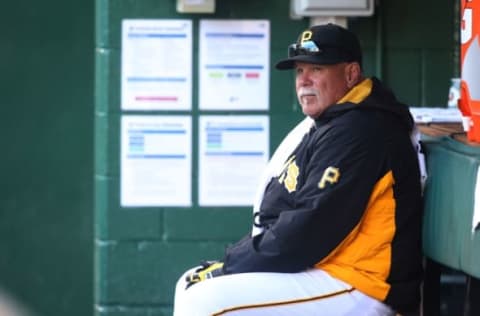
Sign a “Searageable” Veteran for the Rotation
Pirates’ pitching coach Ray Searage has had some success getting good seasons out of serviceable veteran pitchers. The Pirates current starting rotation options consist of Gerrit Cole and the seven dwarfs. Actually, if Cole can stay healthy he’ll be a top-of-the-rotation starter and Jameson Taillon had a solid rookie debut (3.38 ERA, 3.71 FIP in 104 IP). Beyond that, the rotation options are question marks. Tyler Glasnow is the team’s top pitching prospect. He pitched 23 1/3 innings with the Pirates last year and struck out 24 batters, but walked 13. He may start the year in the rotation, but could experience growing pains in his first full season in the bigs.
Here are the numerous starting pitcher possibilities for the Pirates in 2017:
- RHP Gerrit Cole—Arbitration eligible, made $0.5M last year (free agent: 2020)
- RHP Drew Hutchison—Arbitration eligible, made $2.2M last year (free agent: 2019)
- LHP Jeff Locke—Arbitration eligible, made $3M last year (free agent: 2019)
- RHP Jameson Taillon—Pre-arbitration
- RHP Chad Kuhl—Pre-arbitration
- LHP Steven Brault—Pre-arbitration
- RHP Tyler Glasnow—Pre-arbitration
- RHP Nick Kingham—Pre-arbitration
Lost to free agency:
- RHP Ivan Nova
- RHP Ryan Vogelsong
Top minor league starting pitcher prospects (ranked by MLB.com):
- #1 RHP Tyler Glasnow, ETA 2016 (23 IP in MLB in 2016)
- #5 RHP Mitch Keller, ETA 2018
- #10 RHP Nick Kingham, ETA 2017
- #11 RHP Clay Holmes, ETA 2018
- #12 RHP Yeudy Garcia, ETA 2018
Gerrit Cole will receive a raise in arbitration. Prior to the 2016 season, the Pirates declined to offer Cole a long-term deal or give him a significant raise in pay after he won 19 games with a 2.60 ERA last year. Cole was not at all happy about this. His agent, Scott Boras, said, “Every team has the CBA right to control the salaries of non-arbitration-eligible players. The primary consideration within its organization is to distinguish performance among players. If a star player is making near the same compensation as a utility player, the system will be held as unfair among the players in that organization.”
Cole is eligible for arbitration this year and MLB Trade Rumors projects that he’ll make $4.2 million in 2017. Two other arbitration-eligible starters are Drew Hutchison and Jeff Locke. MLB Trade Tumors projects them to make $2.2 million and $4.2 million, respectively. The rest of the rotation possibilities are young, pre-arbitration players
With so much youth slated for the rotation, it’s a good idea for the Pirates to sign at least one veteran arm on a cheap deal. There are plenty of free agent pitchers available who fit this mold, including guys like Jhoulys Chacin, Bud Norris, Jake Peavy, and maybe R.A. Dickey. Jeremy Hellickson likely priced himself out of range of the Pirates with his 12-10, 3.71 ERA, 1.15 WHIP season in 2016.
Also, I’m sure the Pirates would like to re-sign Ivan Nova, who was very good with Pittsburgh in 11 starts down the stretch (3.06 ERA, 2.62 FIP). That good stretch very likely raised his value on the free agent market, though, and other teams always seem to have more money to spend than the Pirates.
Pittsburgh’s rotation is unlikely to be an asset in 2017. It looks more like a year for developing young pitchers and hoping Cole comes back healthy. That being said, if Cole is back to his previous self and the two top pitching prospects, Taillon and Glasnow, come through, the rotation won’t be too bad. Adding a veteran or two would allow the team to be patient with the young pitchers they have.
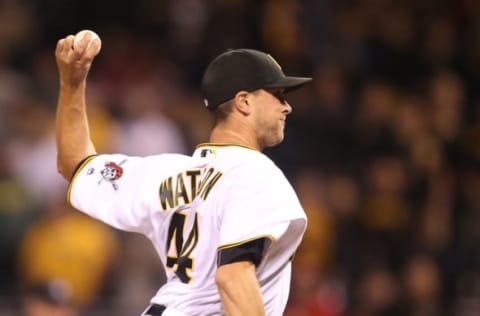
Don’t Spend On the Bullpen
Here are the relief pitcher possibilities for the Pirates in 2017:
- LHP Antonio Bastardo—$6.625M in 2017 (free agent: 2018)
- LHP Tony Watson—Arbitration eligible, made $3.45M last year (free agent: 2018)
- RHP Juan Nicasio—Arbitration eligible, made $3M last year (free agent: 2018)
- RHP—Jared Hughes—Arbitration eligible, made $2.175M last year (free agent: 2019)
- LHP—Felipe Rivero—Pre-Arbitration
- RHP—A.J. Schugel—Pre-Arbitration
Lost to free agency:
RHP
More from Call to the Pen
- Philadelphia Phillies, ready for a stretch run, bomb St. Louis Cardinals
- Philadelphia Phillies: The 4 players on the franchise’s Mount Rushmore
- Boston Red Sox fans should be upset over Mookie Betts’ comment
- Analyzing the Boston Red Sox trade for Dave Henderson and Spike Owen
- 2023 MLB postseason likely to have a strange look without Yankees, Red Sox, Cardinals
Even though the Pirates bullpen took a big step backwards from the previous season, I believe they should stick with their longtime pattern of not spending much money on relievers. This means they should think hard about what to do with their most expensive reliever, Antonio Bastardo.
Bastardo is due to make over six million next year. He’ll be 31 years old in 2017 and is coming off the worst season of his career. The Pirates could trade him now for a minor league flyer or keep him to start the year and hope he builds up value, then trade him to a team that needs a reliever at the trade deadline.
Tony Watson is likely to get a solid raise from last year’s $3.45 million contract because he picked up 15 saves after Mark Melancon was traded. MLB Trade Rumors projects Watson to make $5.9 million in arbitration. If he pitches like he did in 2014 (1.63 ERA, 2.69 FIP) and 2015 (1.91 ERA, 2.84 FIP), he’s well worth that price. Even if he doesn’t return to that level of effectiveness, he’s a fine closer for a team that should be looking more at 2018 and beyond than 2017.
Juan Nicasio is an enigma. He has good enough stuff to strike out 203 batters in 176 1/3 innings over the last two years, but he also walks too many hitters. His career ERA (4.80) is more than a half-run higher than his career FIP (4.10). The good news is that Nicasio was much better as a reliever in 2016 than as a starter. Coming out of the pen, Nicaso struck out 31% of the batters he faced. That ranked ninth in the National League for relievers who pitched more than 50 innings. Over his entire career, Nicaso has a 5.11 ERA as a starter and 3.80 ERA as a reliever. The Pirates need to commit to Nicasio as a reliever and let his high-strikeout stuff play up in a bullpen role.
Next: Pirates 2016 season in review
The Pirates are unlikely to keep up with the Cubs in the NL Central next year, but could stick around .500 while they add to their core of young players. The first step would be to trade Andrew McCutchen, either this offseason or at next season’s trade deadline. Get a good package back for Cutch, then let the young hitting and pitching prospect develop.